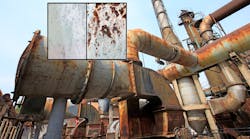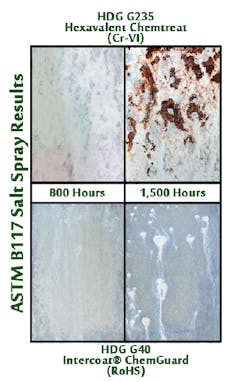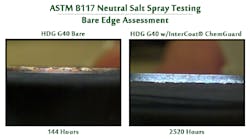A new type of coating for stainless steel developed by Chemcoaters uses covalent bonds to provide better corrosion resistance on galvanized steel. The coating, called InterCoat ChemGuard, is applied over a light layer of zinc where it reacts with the zinc to form permanent covalent bonds. This dramatically improve its corrosion protection properties. The bonds form at the molecular level, so it cannot be washed or worn off. This is different from and more effective than the typical barrier coating. It lets the finished steel part or plate be bent, stamped, post-painted, and even sheared, while still providing self-healing characteristics that protect newly exposed zinc that naturally occurs during secondary processing.
The coating is a major development for engineers and companies looking to extend the corrosion resistance of galvanized steel. The product complies with RoHS; continues to protect during stamping, roll forming, and shearing; and is weldable. With a low coefficient of friction, it actually enhances these processes. It is designed to be applied on the galvanize line or, for custom formulas, by the developer of this compound.
The coating offers significant cost savings because it allows lighter zinc to form the bond. It reduces the need for zinc coatings heavier than G30—the standard practice used for the last 70 years to protect metal from corrosion—in many applications on the market today. The product also eliminates the need for temporary corrosion-protection coatings which are often used in shipping and material storage. This includes hexavalent chrome (a known carcinogen), making it more environmentally friendly for all building, architectural, transportation, and consumer appliance applications.



